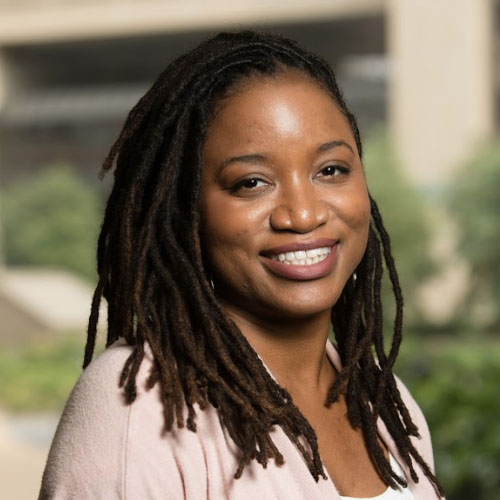Originally published in the August issue of the Notes on Antiracism, Justice, and Equity newsletter.

Welcome to our monthly newsletter, Notes on Antiracism, Justice, and Equity. I’m excited to use this platform to share my thoughts and what I have learned in this work. We will also be highlighting some of you as change agents at the School of Public Health (SPH), and sharing practical ways you can become an antiracist. The work ahead will be difficult, and we will have to rely on each other to make real progress.
Looking at the academic year before us, I recognize the wealth of unknowns we are facing. The ongoing pandemic, climate crisis, and political landscape are all so unpredictable and exhausting. I feel as if we’ve been running a marathon for 15 months non-stop, with many miles still to go.
The struggle for justice feels similar to me and, like running a marathon, it will take incredible amounts of stamina and courage. Our school’s new Strategic Plan for Antiracism is one milestone in our institutional journey towards justice, and we invite you all to join us in this work. We are dedicated to identifying and eliminating all kinds of oppression in our school, including any barriers to people with disabilities. The struggles for justice and disability rights are imperative and symbiotic.
In late July, the Biden administration released guidance indicating that people with “long COVID” — with its potential life-altering symptoms, such as fatigue, cognitive impairment, cardiac abnormalities, and muscle pain — will have access to protections under the Americans with Disabilities Act (ADA). This is promising news. Though not perfect, the ADA has been life changing for so many people since it was signed into law 31 years ago. One thing it does not address however, is the compound damage that occurs when racism intersects with disabilities.
For example:
- The unemployment rate in 2020 for disabled people overall was 12.6%, but the jobless rates for disabled Latino/as, Blacks, and Asians were higher — 16.8%, 16.3%, and 17.7%, respectively.
- Because of systemic racism, Black, Latino/a, and American Indian people are more likely to have disabling and/or chronic health conditions and less likely to have access to diagnoses and proper treatment.
- In the United States, 50 percent of people killed by law enforcement are disabled, and more than half of disabled African Americans have been arrested by the time they turn 28 — double the risk in comparison to their white disabled counterparts.
- More than 46 percent of Hispanics with disabilities are arrested as children or young adults.
Those of us who embody multiple marginalized identities are constantly learning and adjusting our survival strategies according to shifts in the political, social, and economic domains.
As our school embarks on this new endeavor toward antiracism and justice, I want you to consider how our community members with disabilities can fully participate in our school. Diagnosis and crises do not diminish our worth, and spaces should not limit what we contribute. And while the barriers that have made life difficult for so many of us still exist, as we know better, we must do better. Let’s rethink our return to campus as an unprecedented opportunity to challenge traditional ideas about space, time, communication, and performance and to be radically inclusive.
I’m thankful for your commitment and partnership in the days, months and years to come.
Toward justice,
Lauren Jones
Director, Diversity, Equity, and Inclusion
she/her/hers
Sign up to receive the monthly Notes on Antiracism, Justice, and Equity newsletter.
Sources:
- “Long covid—mechanisms, risk factors, and management“
- “Black, Disabled and at Risk: The Overlooked Problem of Police Violence Against Americans with Disabilities“
- “Persons with a Disability: Labor Force Characteristics — 2020“
- “Understanding the Policing of Black, Disabled Bodies“
Follow up reading:
